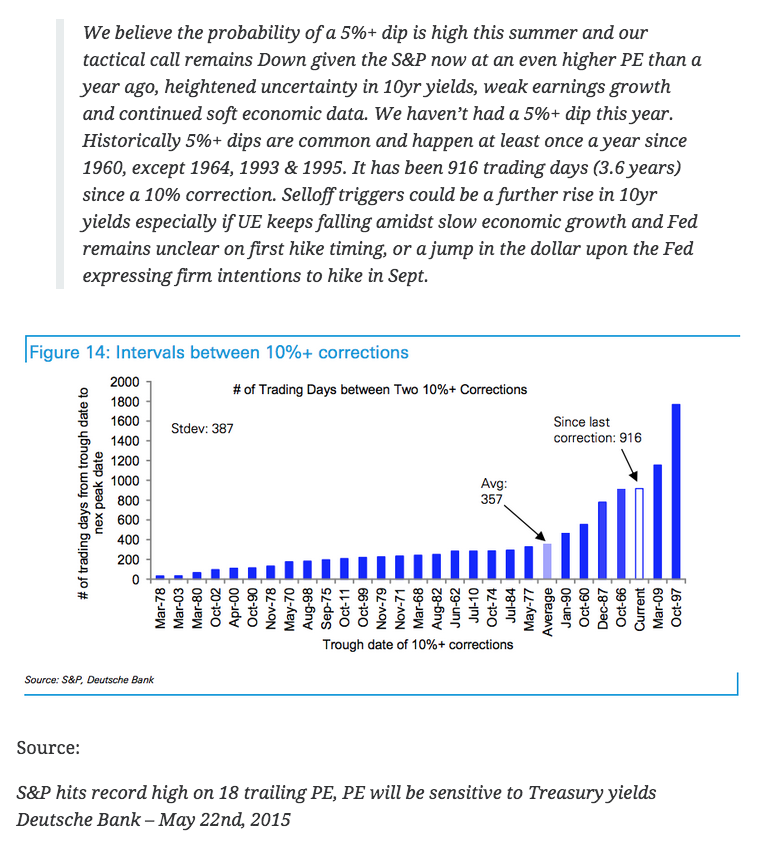I got bounced the snippet below by a punter who had taken it from The Reformed Broker
 This particular punter has a penchant for anything that indicates that the market might be about to have a correction of any sort. As such they are drawn to this sort of analysis. The drivel about trailing PE’s is neither here nor there – it is simply someones narrative based upon their assumptions. The bit that interests me is the following implication –
This particular punter has a penchant for anything that indicates that the market might be about to have a correction of any sort. As such they are drawn to this sort of analysis. The drivel about trailing PE’s is neither here nor there – it is simply someones narrative based upon their assumptions. The bit that interests me is the following implication –
The market has not had a 10% correction for sometime (longer than average) and is therefore due for such a correction.
I have a few problems with this sort of statement. Firstly, it is based upon an average and an average is a very blunt tool that doesn’t convey as much information as people think it does since it misses the notion of both variation and the circumstances of actual incidents. The average does not contain much fidelity about what is actually occurring hence the old joke about the statistician who drowned in a creek with an average depth of three feet. Variation is the key to understanding any situation.
The second point I have difficulty with is that this has an inkling of the gamblers fallacy. This fallacy is based upon a misunderstanding of how statistics work. For example imagine you are betting on the toss of a coin – our intuitive sense of probability says that we expect that we have a 50/50 chance of a toss resulting in a head or a tail and that these outcomes are independent events. So our chance of throwing 2 tails in a row is 0.50 x 0.50 or 0.25, the odds of throwing 3 tails in a row is 0.5 x 0.50 x 0.50 or 0.125. Thus the probability of extended streaks of a single outcome decreases. It is these extended streaks that catch people out. Their reasoning is that since there has been a run of single outcomes then the underlying probabilities governing the event changes. This is the gamblers fallacy in action.
Lets assume that we have tossed 5 tails in a row – the probability of such a streak is 0.50 x 0.50 x 0.50 x 0.50 x 0.50 = 0.03125. In any given sequences of tosses there is a small chance of generating this run. However, this probability applies to the run itself, it does not apply to the coin toss. If we toss the coin again the probabilities of it being either a head or tail remain fixed. They have not altered – the coin has no memory of past events. It is this disconnect between the probability of a string of events versus the probability of a single event that catches people out. Just because there has been sometime between a 10% correction on the S&P500 does not automatically imply that a 10% correction is inevitable anytime soon.
At some point in the future the market will undoubtedly correct – when this might be I have no idea, but more importantly nor does anyone else.





